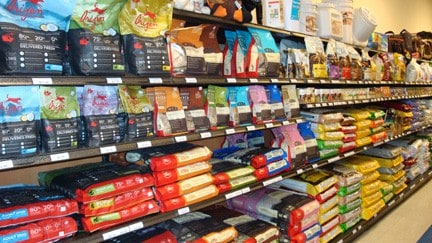Pet Food Myths
Let’s take a look at a couple of today’s pet food marketing myths……….
The other day during an appointment a client mentioned that she was unable to purchase her dog’s food at a local pet food store. They refused to carry it because it “contained byproducts”. The word byproduct has become a dirty word in today’s world. I think most of us think byproducts are the “dirty” parts of the animals that are not fit for human consumption and thrown into pet foods.
Byproducts have been defined by the Association of American Feed Control Officials (AAFCO) as “clean parts of slaughtered animals”, for example, liver, kidney, heart and tripe. These are parts of the animals that people in our country have decided not to eat, but are considered delicacies in other countries. These organs are very good sources of protein, and are considered very palatable. They are consumed first by wild dogs such as wolves and coyotes. Byproducts are beneficial to pet foods as long as they are manufactured by a quality company.
Another dirty word in the pet food industry is corn. The two words that I think people often associate with corn in pet foods is “filler” and “allergies”. Actually, corn allergies are quite rare in dogs and cats. I believe that corn is linked to allergies in many people’s minds, is because it was often found in pet foods that contained beef. Thus, when the diet was changed to one with a different protein source other than beef, the skin or gastrointestinal allergies improved, even though the corn was not the cause of the allergy. Fillers are defined as ingredients with no nutritional value. Corn is a very digestible grain that provides fiber, essential fatty and amino acids, as well antioxidants.
Of course, byproducts and corn are only beneficial to pets when they are in the hands of manufacturers that are committed to quality and health. What I would suggest, is not closing the door on a food simply based on the words corn or byproduct on the ingredient list. I think there are both poor and high quality pet foods out there that contain both of these items.
There are so many choices available today. Investigate and take the time to look beyond the marketing to find the best nutrition for your friend.
Interested in further reading about how to evaluate on-line pet information?
Distinguishing between cat food facts and myths on the internet.
Distinguishing between dog food facts and myths on the internet.


